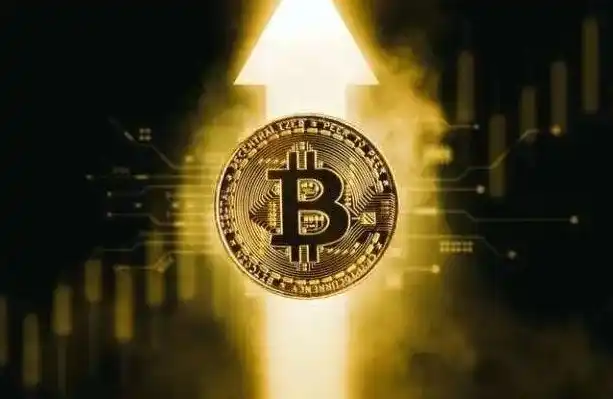Popular Science | Understand LBP in five minutes, how to buy the most reasonable chips in the fairest IDO
Original author: Crypto Dog
Last week, Dragonverse Neo, a new game produced by MOBOX, a veteran oil refining leader, launched a fair launch of the game token $MDBL, which was launched using LBP on the second layer of Bitcoin's native Merlin Chain.
As an IDO strategy, LBP has been widely adopted and enduring in the crypto world with its advantages of fair and efficient price discovery. However, many investors are unsure about how to participate in this mechanism, and even fall into traps in the process. This article will introduce the price mechanism of LBP in plain language and share a more reasonable participation strategy. After reading this article, you will naturally have the answers to the following questions:
※ Why is LBP a fairer and more community-friendly IDO method?
※ What factors affect the token price during the LBP process?
※ Why are you hanging on the top of the mountain while others can buy cheaper chips?
※ When should you enter the market and how to buy it best?
LBP: Born for Fairness
LBP stands for Liquidity Bootstrapping Pool, a decentralized token issuance method that originated from the weighted pool proposed by Balancer and was widely adopted. Its birth aims to solve a core problem:
How to distribute tokens to community members at a relatively fair price?
If a token is sold on Uniswap, as soon as the token pool is added, hundreds of robots will start to rush to buy it, and the price will soar instantly, and it will get higher and higher. Real project participants can't outrun the robots; if tokens are distributed according to fund weights, users with small funds will have almost no chance to buy fairly.
LBP came into being under such circumstances. It combines the Dutch auction (price from high to low) and the English auction (price from low to high), allowing the token to adjust the price with market demand during the launch process. If there are many buyers, the price will rise; if no one buys, the price will fall. This strategy largely solves the fairness problem of IDO:
1. Buying first does not necessarily mean buying the lowest-priced chips, thus avoiding preemption - achieving fairness in purchase time.
2. There is no limit on the purchase amount to prevent large investors and robots from absorbing funds - making the distribution of holdings more extensive.
3. Prices can rise or fall during the launch process, encouraging rational price building - forming efficient price discovery.
Why can prices rise or fall in LBP?
To understand the price model of LBP, you must first understand a concept: weight. In the LBP liquidity pool, there are two types of tokens: one is the issuance token of the project, and the other is a token with relatively stable value (such as USDC). "Weight" represents the value ratio of the two tokens in the pool.
The weight will change from high to low over time during the LBP process, and it is only related to time.
Take MASK issued by Mask Network as an example. At the beginning of its LBP, the value of MASK accounted for 95% of the total value of the liquidity pool, and the remaining 5% was USDC. As time goes by, this ratio will gradually change, until the end, MASK's value share will drop to 40%, and USDC's share will increase to 60%. The parameters for weight change are preset by MASK Network.
From this, we can derive the price formula of MASK:
MASK price = (MASK weight / USDC weight) * (USDC quantity / MASK quantity)
From the price formula, we can see that:
· As time goes by, the (MASK weight / USDC weight) on the left side of the formula gradually decreases from 95:5 to 40:60;
· As the purchase volume increases, the (USDC quantity / MASK quantity) on the right side of the formula gradually increases, and there are fewer and fewer MASKs in the pool
Therefore, the token price is affected by both "time weight" and "transaction behavior", and can rise or fall. The LBP process can reflect the spontaneous mechanism in the market economy. Through trading activities, prices tend to be reasonable, reflecting the real supply and demand relationship in the market. It is a good price discovery process.
Advantages and challenges of LBP
Benefits to users
· Regardless of the amount of funds, you can buy chips.
· There is a greater probability of buying chips at a reasonable price without the need for preemptive competition.
Tests for users
· Test the timing of entry. If you are impatient, you may be stuck on the top of the mountain, and if you are indecisive, you may miss the best time to get on the train.
· Test the vision of the project. It is necessary to examine whether the team has the strength and plan for long-term development.
Advantages for the project party
· Since the mainstream assets account for a small proportion of the pool at the beginning, the project party can provide liquidity with less assets, and there will be less pressure to start.
Test for the project party
· Test the long-term construction ability: If the token has no practical application in subsequent products and ecology, or there is no continuous positive information, then the LBP launch method will not make much sense.
LBP Strategy: How to Buy the Most Reasonable Chips
Preliminary Research: Psychological Price Determines the Time to Enter
Because it is difficult to predict its short-term price fluctuations, LBP is essentially a valuation game. Give the project a valuation, and divide the valuation by the total amount of tokens to get the psychological expected price. If at any time during the LBP period, the current price is lower than your psychological price, it is a more appropriate time to enter.
Before LBP, you can conduct research on the following aspects of the project:
· Market value estimation: Is it in a track with a high ceiling and high popularity? Is the business purely a pie in the sky or does it have a clear product roadmap?
· Project team: investment background, past reputation, team strength
· Economic model: the economic model of the token and subsequent applications in the ecosystem
Several possible price trends based on market heat and initial FDV
Review the price formula of LBP:
Token price = (Token weight / USD weight) * (USD quantity / Token quantity)
Combining the price formula with past cases, we summarize several possible price trends under different market heat + initial FDV to derive the corresponding LBP purchase strategy:
1. Initial FDV Low, high participation: The sooner you participate, the better
If the initial price of the token is low and the market participation is very high, the price will often rise rapidly after the opening and fall back later, but it is highly likely that it will never fall below the initial issue price.
Take $MASK as an example, the initial price of LBP was $3.9, and the price at the end was $13.28, and the average price of $MASK throughout the process was $20.94. Other famous LBP cases are also the same: Merit Circle's $MC, GuildFi's $GF, the opening price was the lowest, and it rose rapidly as soon as it opened, and never fell back to the price at the beginning.
If a project is hot and you think the market value represented by its initial FDV is underestimated, then the strategy of participating is to participate as early as possible.

2. There is a certain degree of heat, but it is not FOMO: enter in the medium term, it is not recommended to delay until the end
Many people will be confused by the expected price curve of LBP, thinking that the price will definitely drop later, and waiting can be exchanged for cheaper chips. However, the later the time is, the less impact the weight change has on the price. When the purchase behavior causes the price to rise, it is less likely to fall back to the low price over time. If everyone waits until the end to buy, the price will form a U-shaped rebound with a large amplitude.
In real LBP, this situation often happens: taking $TUNA and $DEAI as examples, the price fell for a period of time at the beginning, and the price was the lowest in the medium term. Therefore, in this case, it is recommended to buy when the price/market value reaches the appropriate psychological expectation.

3. LBP with low expected heat
For LBP with fewer participants, the right half of the price formula (USD quantity / Token quantity) has little effect, and the price is mainly affected by (Token weight / USD weight). In theory, if there is no purchase, the purchase price is the lowest at the end. However, in the real environment, the assumption of no purchase is not completely true. In order to avoid the price being pulled up at the last moment, you can choose to buy some time before the end.

Summary
Based on all the above analysis, the most common LBP strategy can be obtained:
· At any time when the price is lower than your valuation, divide the total amount into multiple purchases.
· For projects with high popularity and low opening prices, you will not lose money if you enter the market immediately after the market opens, but it is not recommended to invest a large amount of money as soon as the market opens like traditional IDO.
· For most situations, it is not recommended to wait until the later stages for cheaper chips. The later the option weights, the lower the weight, and a small purchase may cause the price to rise. Most of the past lows of LBP have been in the mid-term, and it is recommended to enter the market at a suitable price range.
This article is from a submission and does not represent the views of BlockBeats.
Welcome to join the official BlockBeats community:
Telegram Subscription Group: https://t.me/theblockbeats
Telegram Discussion Group: https://t.me/BlockBeats_App
Official Twitter Account: https://twitter.com/BlockBeatsAsia
 Forum
Forum OPRR
OPRR Finance
Finance
 Specials
Specials
 On-chain Eco
On-chain Eco
 Entry
Entry
 Podcasts
Podcasts
 Data
Data

 Summarized by AI
Summarized by AI






